This gallery contains 8 photos.
What Exactly is a Mosque? Ask most Muslims, or come to that anyone in the street, what their idea of a mosque is, and you will get a mixture of opinions; but most of all you will hear – “a … Continue reading
This gallery contains 8 photos.
What Exactly is a Mosque? Ask most Muslims, or come to that anyone in the street, what their idea of a mosque is, and you will get a mixture of opinions; but most of all you will hear – “a … Continue reading

I’ve been asked to put up on this blog the design I made for the new Cambridge Mosque back in 2008 — and here’s an elevation of it to be going on with. The brief was for a space for 1000 worshippers, 80 cars and in an Anglo-Ottoman style — and to be costed. I had three weeks to do it. I’m not sure which bit was Anglo but I believe there was a Paxton style iron and glass atrium somewhere. It was many years ago.
The project was to raise funds to enable the purchase of land in central Cambridge where the mosque was eventually built. I will add more drawings of the project soon.
I’ve also prepared a long critique of the new Marks Bardfield Cambridge mosque as it was finally constructed. That will also be posted in the near future.
New from Quilliam Press
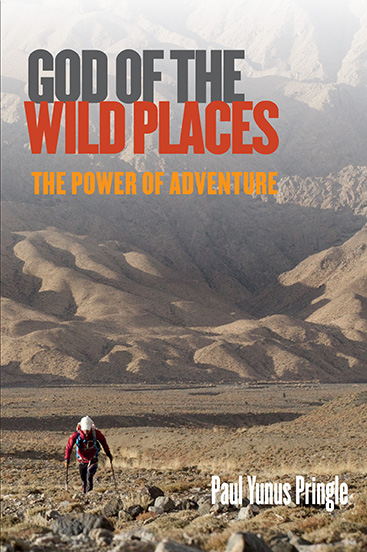
Schoolteacher Paul Pringle has faced many challenges in his life: struggles with alcohol and anxiety, with what it means to be a man, and with the very meaning of life itself.lf
In his search for self-discovery he trains as an ultra runner. The world’s toughest marathons seem to beckon him. He will face hundreds of miles of deadly struggle against the mighty Sahara Desert, the forests of Finland and the subzero wastes of the Canadian Arctic. Journalists and scientists monitor his progress as he pushes his body to the very limits, as he competes in extreme sporting events which have already claimed lives.
But the outward struggle supports a growing sense of self-knowledge and of bonding with the natural world from which modernity had alienated him. This is an autobiography of personal transformation, of the discovery of a true masculinity amid the confusions of modern Britain, and of a painful but grace-filled journey to the changeless Madina of truth.
Published on Jan 1, 2023
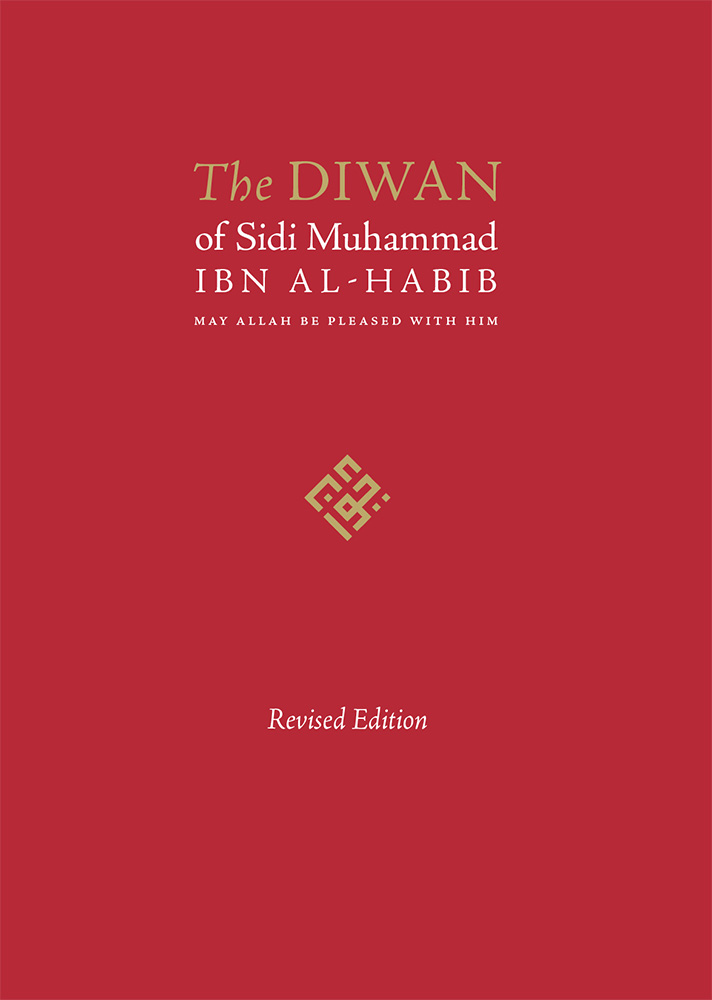
Sidi Muhammad Ibn al-Habīb, may Allah be pleased with him, appeared at a significant time in Moroccan history at the end of a great epoch of western Sufism and was in some ways the isthmus between the old Muslim world of the East and the new age of Islam taking root in the West at the end of the twentieth century.
Morocco is significantly, the most western Muslim nation, parts of it being in fact further west than mainland UK. Ibn al-Habīb was teaching formal knowledge of the Islamic disciplines in the Qarawīyyīn mosque in Fes as long ago as the year 1900 but by the time he died in 1971 at the age of 101, he was a renowned spiritual master as well, with many disciples in Morocco and Algeria and a small number from Great Britain, France and America. He is buried in his zawiya in Meknes, Morocco, and left this famous Diwan, a collection of sacred verse, as a guide for the sincere seeker of gnostic truths.
These poems are normally sung in Arabic and this revised translation is intended to facilitate this for non-Arabic readers by including transliterated text and translation as well as the original Arabic, with numbered poems and a table of contents for easy navigation. Included is also the original introduction and litany by the Shaykh as well as a new biography hitherto unseen in English.
This revised version restores the text closer to the 1962 Meknes edition with the addition now of the recommended supplications after the five prayers and the Salat al Mashish. The Arabic text has been thoroughly checked and is now in a more readable typeface (Lotus).
It is now published by Quilliam Press and available in flapped paperback with sewn sections for extra strength. (Not print on demand) A cloth bound version is also available.
Available from most bookshops in UK and Central Books.
https://www.centralbooks.com/diwan-of-sidi-muhammad-ibn-al-habib.html
A technical hitch is stopping it appearing on Amazon. It is being investigated.
Paperback RRP £19.95
ISBN: 978-1-872038-27-8
Cloth RRP £29.95
ISBN: 978-1-872038-28-5
Publication date Nov 1 2022
from Quilliam Press

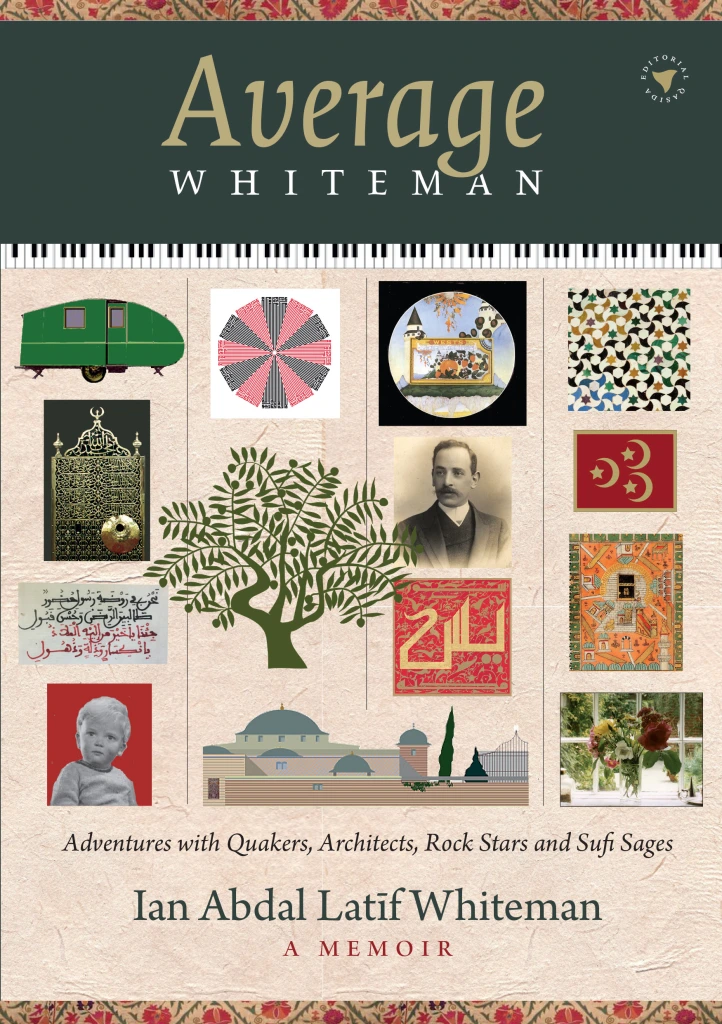
A revealing memoir of a sixty year journey from early post-war Britain through to the new millennium and the huge social, political, technological and religious upheavals that went with it. The author details his slow awakening to the extraordinary worlds he was to move through: from the Quakers of his upbringing to the hard-nosed architects that he studied with in 1960s London and his immersion in the chaos of the burgeoning music business.
His musical journey then took him, almost unwittingly, into a Moroccan Sufi order, and eventually on the pilgrimage to Mekka and Medina. Ian Abdal Latīf tries to examine his motives at each step of the way, recording his meetings with real holy men and not-so-holy men, and the upheavals that these encounters brought about. In this illuminating and entertaining autobiography he charts a course through these tumultuous waters, eventually finding some peace and gratitude for the lessons learnt.
288pp with a 20pp colour section. Many previously unpublished pictures.
“A captivating journey through some little-known but surprisingly influential moments of musical and British Islamic history.”
Abdal Hakīm Murad
Dean, Cambridge Muslim College
“Honesty and scrupulous self-examination are the best virtues of any autobiography, and Ian Whiteman’s is all of that and more. He takes us on a voyage from his rural and musical youth, through the music scene of the psychedelic 60s, and into the spiritual world of Sufism, with all the insights and character sketches of the best storytellers. Recommended!”
Richard Thompson
Singer–Songwriter
“Of all the voyages of self-discovery that began in the London of the 1960s, few were as life-changing and eventful as that of Ian Whiteman. From the stage of the Marquee to the Haram at Mecca, he has a lot to tell us in this unique memoir.”
Richard Williams
Music and Sports writer
Price £19.95
282 pages + 20 pages many never seen before colour photos,
Exclusive Distribution and individual sales Hu Books
NOW AVAILABLE AS AN EBOOK. Visit iBooks, Barnes and Noble, Googleplay et alia.
Can also be obtained from Mecca Books and Zaytuna Books in the USA; from Wardah Books in Singapore.
Editorial Qasida is a non-Amazon publisher.
Song lyric by Ian Whiteman
When the dawn breaks
And the sky shakes
And the stories now unfold
When the earth gives up its secrets
and the truth can now be told
You will stand there right before Him
And your words will seem so small
Lord, forgive me, I’m just a poor man
Who had tried to hear Your call
Why’s your heart in such confusion
When this water is so pure
It’s this doubt that is illusion
And this drink is just the cure
Thirty years I have been calling
Don’t you hear my cry at all
Lord forgive me. I’m just a poor man
Who had tried to hear Your call
When I stood here empty handed
You sufficed my every need
I did not dare to ask for anything more
Just in case You thought it greed
What is heaven? What is bliss
Can I ask for more than this?
Lord forgive me. I’m just a poor man
Who had tried to hear Your call
Available on Itunes and Spotify
In the summer months myself, like many who work independently, have down time when clients go on holiday and not much happens. Which is why it’s when I trawl through my files looking for uncompleted projects to work on and breathe new life into. The first of those to meet the light of day this summer of 2019 is a recording I made in 2001, three weeks before 9/11, at a small gathering in the coastal town of Laraiche on the Atlantic coast of Morocco just south of Tangiers. An old Moroccan friend of mine from Laraiche, Sidi Mustafa Mesamri, wanted to hold a gathering of the best singers and musicians he could muster for no other reason than love of the great Andalusian tradition still very much alive in Morocco. It brought together principally the Andalusian Orchestra of Tetouan and the Fes Singers as well as many individuals from Tangiers, Khenifra and other cities in Morocco. As well as many guests from Britain, Spain and America.
Our recording (assisted by Peter Sanders) was in two segments. The longest segment was released on a 2CD set in 2002 by Ihya records in Canada and had a limited distribution in North America and Europe. The first segment, which preceded the main recording was before the Fes Singers had arrived. It needed careful editing but after 18 years is now made available on this release. It is now on Spotify and soon on Itunes.
Being pre 9/11 lends the recording a kind of innocence of what was to come and because of its spontaneity and an unplanned location (the house we were staying in) avoided the use of loud PA amplification which now makes live recording in Morocco almost impossible. It is also a wonderful example of how the Moroccans from different cities and often with slightly varying traditions can all fit seamlessly together with no rehearsal and produce ecstatic classical music and singing in this ancient tradition.
It’s 1974 and the great Moussem is happening in Meknes a week after the actual Mawlid celebrations have taken place throughout Morocco. It is in the zawiyya and now the final resting place of Muhammad ibn Al Habib, may Allah be pleased with him. He had passed away two years previously on his way to Haj in what was possibly his 102nd year. Many of his followers – his fuqara – had arrived from all over Morocco, desert dwellers dressed in white and city dwellers in fine jellabas and silhams. Also a large contingent of Algerians had arrived in an old grey Citroen van and other cars traveling also from the desert in the south of Algeria and from cities in the north like Oran and Boufariq. Ibn al Habib had died in Bleda in western Algeria near the coast, but was brought back to Meknes to be buried which was his wish I believe. A large contingent of new fuqara had also arrived from England. A mixture of English, Americans, Iranian as well as other nationalities. All immersed in this great gathering.
Uploaded now to this blog is a recording I made of this Moussem which I made on a not very professional cassette player. It’s not a great recording and the tape congeals in places but it’s listenable and more important it is unique – you won’t hear this anywhere else. This is a Morocco which has largely disappeared now although these celebrations continue in Morocco to this day. Nowadays it is all smaller and with the unavoidable blasting PA system, set to extreme reverb! This was the last time a contingent was to arrive from Algeria as the border was closed the following year because of a war in the Western Desert. Some of the singing on this recording is uniquely Algerian, tunes and qasidas only sung in Algeria. But seamlessly included. Also the instantly recognisable voice of Si Fudul Al Huwari can be heard conducting the Mawlid itself. Occasionally nearer the microphone is the bull-like voice of Moulay Qudur from Taza who was singing along and who encouraged me to sing so much that I lost my voice. This is only an hour or so of the event which went on all day interspersed with the prayers and large meals of couscous set out on low tables. It was at one of these tables that two old faqirs said to us that we will eat this meal again one day. I can only hope.
I’ve add the recordings here but I will add them to my audio files page on the home page of this blog.
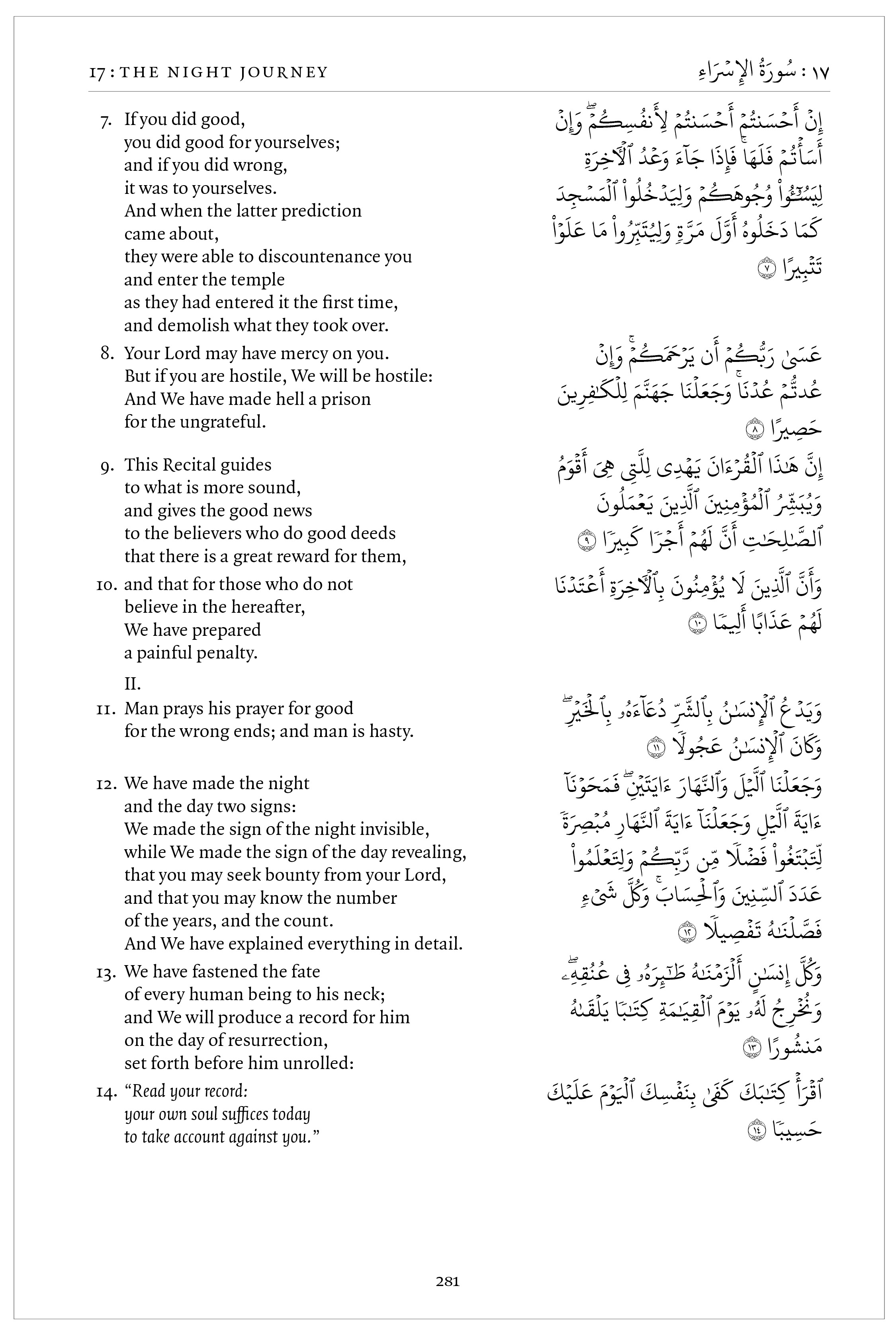
Above: A sample page from the forthcoming English Qur’an translation by Thomas Cleary with parallel Arabic.
About a year ago I reached blog saturation level which means I simply ran out of ideas to blog. My lightweight involvement with narcissagram probably diverted my energies elsewhere. Other factors meant I had no time to write. But I have had time to reflect on many things from architecture to music and all points between. One of the most interesting projects which arrived out of the blue was a fresh publication of Thomas Cleary’s translation of the Qur’an for a client in, of all places, Kabul, which now has a thriving community of young entrepreneurs who have decided business is a better option than the bloodthirsty pursuits of some of its older generation.
I had designed a first printing of Cleary’s English translation around 2002 for Starlatch (in a record 3 weeks) but it was now out of print. The project was to put together a new version with parallel Arabic text. No mean task and it meant inventing novel ways of marshalling the text onto the pages without interfering with the Arabic which could not be touched. It hasn’t been published yet but I include a typical page here to give a foretaste of it. This Ramadan I have been carefully reading it on an Ipad partly to absorb Cleary’s unique translation, which I love by the way, with the Arabic close at hand for reference, and partly to spot any little typos which may have slipped in. It’s like reading the book fresh for the first time. I’ll keep this blog posted on its progress.
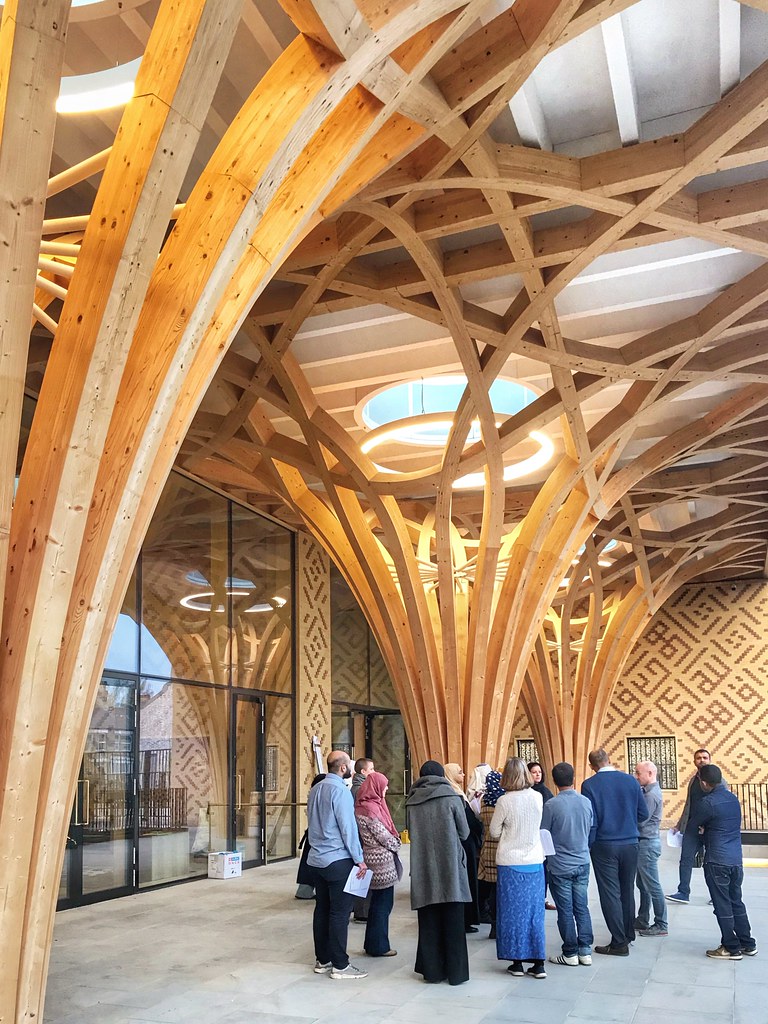 C A M B R I D G E C E N T R A L M O S Q U E
C A M B R I D G E C E N T R A L M O S Q U E
The other major event over this last year was the opening of the new £23 million Cambridge mosque. I’ve followed this with interest since the year 2000 when Dr Abdal Hakim Murad aka Tim Winter first toyed with the idea of, at that time, a madrassa in Cambridge for which I was asked to come up with some designs. The brief : Anglo-Ottoman! Nothing came of this idea as land was notoriously difficult to find in Cambridge. In the end the madrassa idea became the Cambridge Muslim College which is celebrating it’s 10th anniversary this year. The Mosque idea persisted however and in 2009 Tim Winter had an option on some land in the middle of Cambridge for a mosque which he managed to purchase with a loan from a Lebanese bank to beat the property developers all waiting ready to pounce with deep pockets. By this time I was firmly located in Andalusia but Tim asked me to come up with a design (also to be Anglo-Ottoman) for a thousand worshipper mosque on his purchased site with underground car park. I was given three weeks and it had to be fully costed. I’ll expand on this in a future post as it is quite a long story but the drawings managed to help raise the necessary funds to pay off the loan (of several million). After I’ve actually visited the new building later this year I’ll go into this in more detail and give a review deo volente.
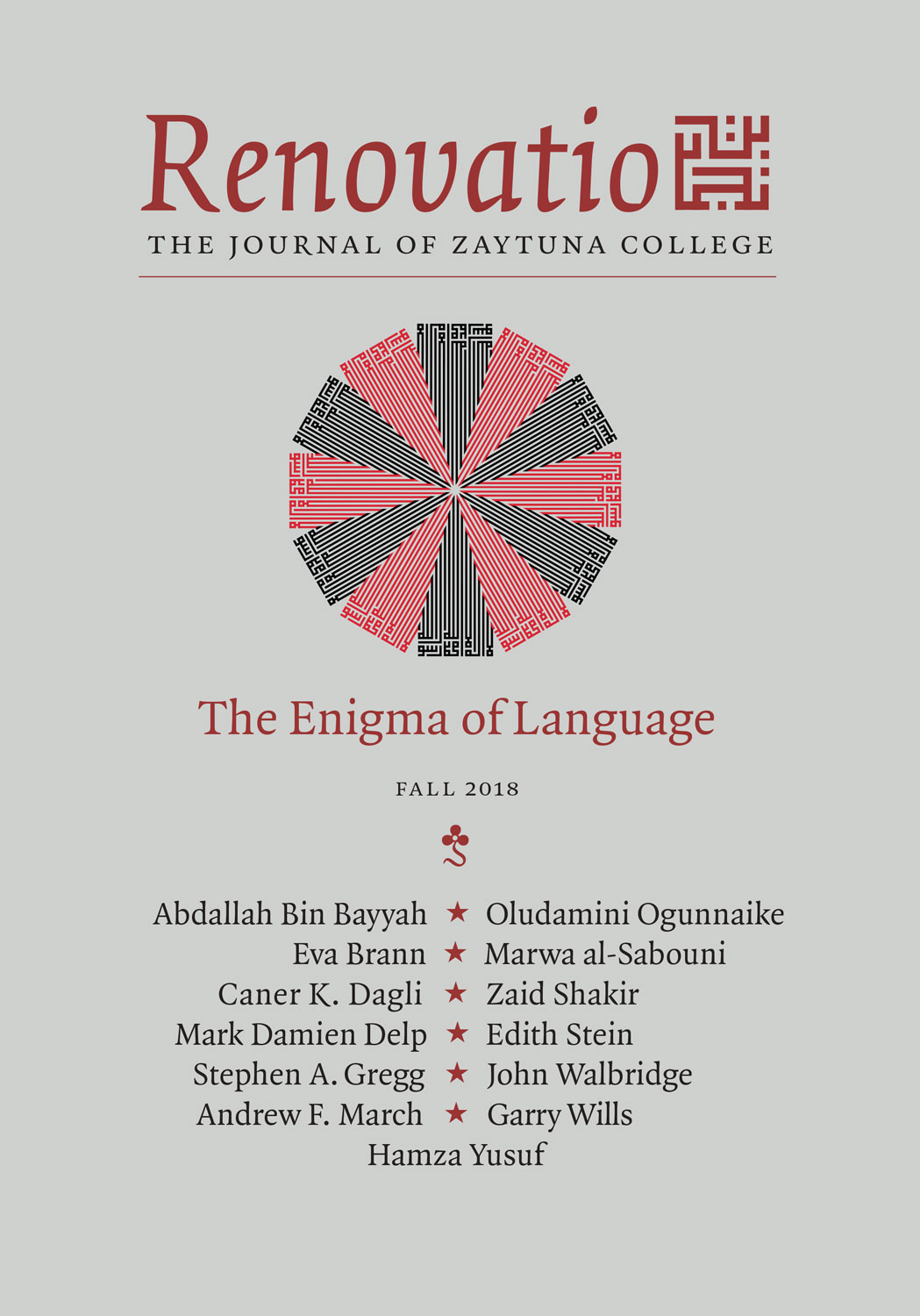
Published in Berkeley CA. Designed in Orgiva, Spain.
A paradox at the root of the question “What is language?” is that the answer will be expressed in language. Is language merely speech? Is it thought, or an expression of thought? In modern intellectual life, these are unsettled questions.
What other word today so escapes a consensus definition, yet is made to carry so much conceptual weight? Everything, from computers to genes, has “a language.” Rationality and language have become almost interchangeable, and to understand something means to understand its language. But if language is a new axis around which we organize philosophical questions about our world—superseding being, and then knowledge—what are the implications of remaining uncertain about the relationship between language and reality?
In the believer’s view, the free and virtually limitless nature of human language remains the stubborn holdout to the concept of the world as a machine without spirit. Also, in the tradition of Abrahamic faiths, the three language arts of grammar, logic, and rhetoric have always ultimately represented a spiritual nature because they enable the mind to conceptualize quality from quantity.
Can the persistent enigma of language, perhaps, help us discover the path back to a more settled intellectual culture, wherein we can begin to once again place our trust in both words and things?
Available shortly.
To purchase contact Zaytuna College Bookshop
bookstore.zaytuna.edu